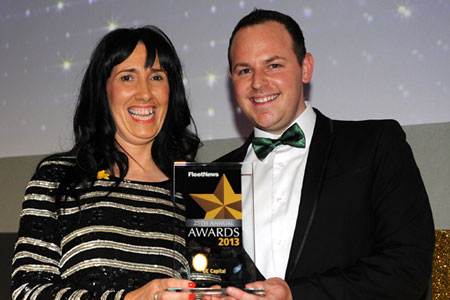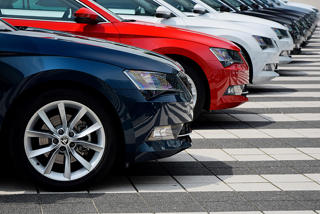GE Capital’s achievements over the past few years read like a wishlist from any fleet manager: reduce costs for business and driver alike, keep drivers safer through significantly reducing accident rates and considerably cut average vehicle CO2 emissions.
These improvements have resulted from a range of intitiatives, including its Safe Solutions risk management programme and a company car re-launch to increase take-up, but Damion Bennett, company car compliance advisor, says communication and education have also played a central role.
Fleet News: The Safe Solutions programme was launched in 2008 – what does this involve and what effect has it had on accident rates?
Damion Bennett: Over the period we’ve achieved a 20% reduction in accidents and a 50% fall in average accident costs through implementing GE’s Safe Solutions programme to our own company car driver base.
Not only has this been a significant reduction in the frequency of incidents, but evidences a remarkable reduction in the overall severity of incidents.
By replicating the same risk programme we offer to our customers, the menu-driven Safe Solutions programme has allowed us to introduce licence checking across both the company car driver population and grey fleet users, online driver training assessment and training, specialised on-road driver training for high-risk staff and in-depth post-accident investigation interviews which help us identify areas for further driver support, including counselling and confidence-building through training and education.
As a result we can evidence to our customers at first hand the benefits of a structured and targeted risk management programme.
FN: A company car re-launch at the beginning of 2011 saw a significant shift from cash takers into company cars. How was this achieved and what benefit has this had for GE Capital?
DB: GE Capital prides itself on a ‘customer-driven agenda’ and our own internal car policy is no different.
By completely re-designing and re-thinking our policy and communications strategy based on driver and employee feedback we have seen 28 long-term cash takers return to cars.
The benefits for GE Capital that come from the review of the car policy framework have been major improvements in cost reduction, safety and in the environmental performance of our own fleet.
By introducing a wholelife cost methodology, combined with our global corporate leverage that identified and sourced the most fuel and tax efficient vehicles, we’ve been able to create a choice list centred on low CO2 models that has proved highly attractive to the legacy cash taker population.
Very importantly, and central to the success of cash-taker penetration, has been the comprehensive programme of driver feedback where we listened and acted upon the specific needs of all of our drivers.
Company-wide driver surveys combined with smaller focus groups enabled us to establish the needs of the workforce and develop an industry-leading car policy that is attractive to staff while being extremely cost effective.
Underpinning the revised policy has been a comprehensive launch programme, including ‘ride and drive’ events and the production and distribution of a What’s Best For Me? guide designed to help drivers make a considered decision and which details the advantages and disadvantages of opting into the company car scheme.
FN: Between 2008 and 2011, average fleet CO2 emissions fell from 169 to 130g/km. How was this achieved and do you have any ambitions of lowering this further?
DB: Today our overall CO2 emissions average is an even more impressive 128g/km.
The key driver to this success has been identifying and implementing an attractive policy to drivers that, over the lifecycle, has altered our fleet composition so that our environmental impact is lower, the company car taxation for drivers reduced and running costs contained.
At the same time, we have provided an attractive scheme to retain company car drivers, convert cash takers into the scheme and provide a clear benefit in recruiting future employees.
We have CO2 caps on all company cars which ensure our environmental footprint remains light. These caps have already been reduced in the latest scheme review, which will ensure we continue to reduce our emissions.
Another important element was the introduction of a comprehensive driver training programme to complement our existing work-related road safety initiative that would ensure greener, more fuel-efficient driving.
FN: How do you engage with and educate drivers to improve driver behaviour and fuel economy?
DB: We have an ongoing, multi-channel education programme in place for all drivers and employees designed to highlight, realise and monitor the optimum set of driver behaviours.
Central to this objective has been the issue of more than 10 driver guides since the re-launch of the company car scheme aimed at providing comprehensive advice and guidance.
In addition, we have held on-site seminars utilising key relationships with industry partners. We even issue regular fuel saving tips.
To us, engagement is all about constant reminders and keeping employees interested and aware of their own role in cost and safety-related topics.
FN: GE Capital had two electric vans on trial to gather real-world information about electric vehicles – what findings did you make, and do you envisage adding electric vehicles to your fleet in the future?
DB: The electric vans are part of a long-term demonstrator programme that will provide a detailed study of real world experiences and data about operating electric vehicles in the fleet environment.
In addition to this continuing study we utilise EVs for our own local use, realising fuel and rental savings of £5,500 per year.
FN: What are the top issues affecting the running of your fleet this year and how are you dealing with them?
DB: This breaks down into four areas:
- Cost control remains top of the agenda and our focus for 2014 remains on driving continuous cost efficiencies
- Employee lifestyle and fitness for purpose. Meeting employee needs is a key consideration and to this effect we have tweaked the policy to add some additional lifestyle models. This approach is consistent with our objective to position the role of the company car as central in the attraction and retention of staff.
- Eroding values. Over the past few years the car benefit an employee can get with his or her allowance has fallen naturally with price inflation and cost changes and we aim to review and address our policy to ensure employee satisfaction.
- Driver communications will remain a key focus as we look to ensure that we consistently and frequently educate, guide and drive the right driver behaviours.



















Login to comment
Comments
No comments have been made yet.